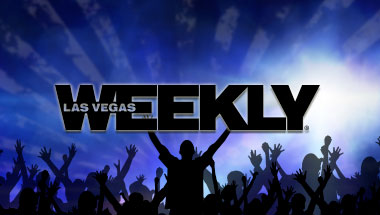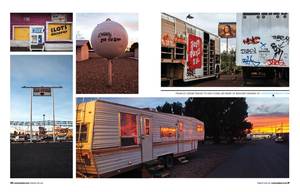Classic and beloved as the output from vinyl’s 1960s and ’70s heyday might be, the era we’re living in now might actually be the best one for listening to music on vinyl. In a year when life has been anything but ordinary, playing music on a turntable has brought normalcy for many, helping us pass the time while connecting our present to the past. Whether you’re a new collector or considering becoming one, dive into this beginner’s guide to vinyl.
A brief history
In 1877, Thomas Edison invented the wax cylinder phonograph, which played wax tubes to produce sound. The record, which was originally made of shellac, was developed by Emile Berliner and eventually replaced cylinders in popularity.
Early record players also included a hand crank, which required a person to manually turn the album to play it. Berliner and colleague Eldridge Johnson formed the Victor Talking Machine Company in New Jersey, which later became RCA Victor in 1929 after being purchased by the Radio Corporation of America (RCA). In 1930, RCA Victor unveiled its first commercial LP, or long-playing record.
Records dominated the recording industry until 1988, when the CD passed vinyl record sales for the first time. But in the early 2000s, as MP3 and streaming music became commonplace, listeners began to return to vinyl in droves.
In September 2019, Rolling Stone reported that new vinyl sales in the first half of the year ($224 million) were closing in on overtaking new CD sales ($248 million).
How it’s made
The process of making vinyl is actually pretty complicated. First, a “master disc” gets made. A sanded-down aluminum disc is coated with a nitrocellulose lacquer and is inspected for flaws. A hole is then punched in the center, and it’s moved to a machine called a lathe. Using a computer and software like ProTools, the source material (the audio) is played and cut into the disc using an extra-fine needle (typically made of crystal or sapphire).
How it works
A record player has a needle, or stylus, made of extremely sharp stone (crystal, sapphire or diamond) that sits gently inside the grooves of a record as it spins—and those grooves are where recorded audio is stored. When the needle “reads” that information, it gets picked up and reproduced as sound through your speakers.
Once the grooves are made in the master disc, the manufacturer needs to make a “stamper,” or a negative disc with ridges instead of grooves. The disc gets coated in silver and then electroplated with nickel, which cause the grooves to protrude outward. The stamper is placed in a press and heated before stamping a vinyl “cake” that resembles a hockey puck. These are traditionally black but can be colored or completely transparent. The edges are trimmed, and the pressed vinyl goes on to be packaged and sold.
Getting Started
You’ll need a turntable, a receiver to plug it into (and a pre-amp, if your receiver doesn’t have an internal one) and speakers to play it through. Tip: If a turntable is a) super cheap and b) folds up into a small suitcase, it probably won’t sound good … and it may damage your records. Instead, here are two affordable suggestions for newbies.
• U-Turn Audio Orbit: Unless you luck into a preowned bargain at a thrift store, it’s tough to beat this simple, solidly built player for the price—$179 for the Basic model, though many suggest upgrading to the Pro ($309).
• Pro-Ject Debut Carbon DC: A sleek, well-reviewed option that features a tried-and-true Ortofon cartridge (which houses the stylus) retails for $400 and comes in colors ranging from black to bright purple.
Maintenance
It’s suggested that a record player’s stylus or needle should be replaced every 1,000 hours of play, sometimes as frequently as once a year. In between replacements, a stylus can be cleaned with a stylus brush, and vinyl should be routinely cleaned with a vinyl brush or microfiber cloth and vinyl cleaning solution, if necessary. Use rubbing alcohol and a dusting cloth to clean the player of dust and debris regularly.
Speeds and sizes
When records were first made, the standard machine spun a 12-inch record at 78 revolutions per minute (RPM). As the technology became more advanced, different speeds and record sizes were made.
• 78: 12-inch records commonly made prior to the 1950s, which spin at 78 RPM and only hold four to five minutes of music per side.
• 45: 7-inch records that spin at 45 RPM and are common for singles and EPs (extended plays).
• 33 1/3: The standard format for LPs (long plays), otherwise known as full-length albums. These 12-inch records spin at 33 1/3 RPM.
What’s so great about vinyl?
The sound. Streaming files are compressed; compact discs omit audio information; cassette tapes suffer from flutter and hiss. Many audiophiles argue that vinyl sounds better than any other format when played on top equipment. But even if you don’t believe that to be the case—and yes, the CD vs. vinyl argument is ongoing—there’s no denying that vinyl music has a warmth and soul its digital counterparts lack. Even the pops and skips of old, beat-up vinyl add character.
The art. No compact disc ever came close to matching the packaging of a vinyl LP. We’re talking cover art big enough to get lost in, lyric sheets with legible words on them and gatefold sleeves—or sometimes entire booklets!—filled with liner notes, photos, illustrations, stories and more. CD booklets are an afterthought; you’ve probably lost half of yours when you moved your CDs to the car. Vinyl LP covers are keepers, heirlooms. The staggering variety of possibilities in vinyl LP packaging is pretty much the reason Record Store Day exists.
The experience. Scan your spines, looking for what’s just-right in the moment. Pull your pick from the shelf, remove the inner sleeve from the jacket and place the platter on your player. Start it spinning, and move the needle to the grooves. Then flip sides and repeat. Try having that sort of visceral relationship with your music when you stream or fire up a download.
The surprises. Colored or clear vinyl is just one of the cool tricks the format can deliver. Every now and again, you’ll find a record with a concentric groove: two songs, running alongside each other continuously on one side of a record, like conjoined twins. (You need to drop the needle in different spots to hear both. Look for the “Christmas Mix” of The Sugarcubes’ “Birthday” for a good example.) And if you look at the inner groove of a vinyl record, you might find a message written there. The Replacements once used that spot to apologize to an entire city for a bad show: “Sorry, Portland.”
Online Shopping
Zia Record Exchange The Arizona-based record store chain—which has two Vegas locations—has been physically closed to the public during the COVID-19 pandemic, but you can still hunt for vinyl (and movies, books and more) online. Bonus: free shipping on all orders over $30. ziarecords.com.
Discogs Whether you’re selling or buying, this music database and marketplace for collectors and enthusiasts is one of the best places to price—and catalog—vinyl. Make an account, create a want list and get notified any time a rare record you covet becomes available. discogs.com.
Amoeba The beloved California record store chain recently announced it would not reopen its legendary LA outlet (a new location could launch this fall), but its website remains intact. Peruse the What’s in My Bag videos to watch clips of your favorite artists crate-digging—then shop for their picks. amoeba.com.
Vinyl Me, Please The Colorado-based vinyl subscription service offers three monthly mailings: classics (blues and jazz), essentials (must-haves across genres and eras) and hip-hop—along with frequent exclusive pressings. vinylmeplease.com.
eBay Just as with any collectible item, eBay can be a good resource for finding vinyl, too. Just make sure to check the album’s condition before hitting the buy button. ebay.com.





